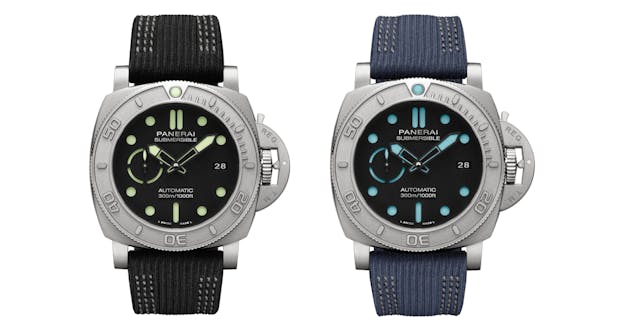What Ever Happened to the (True) Sports Watch?
Does Rafael Nadal get asked if he’s a true sportsman, or if he just looks like one? Of course not! The same applies to sports watches: capability is the only important thing, not their weight in gold.
Designing a mechanical sports watch is a bit like producing a race car that must also be street legal. Reconciling the irreconcilable? Well, that’s the basic idea. It’s a case of asking a mechanical set of cogs and gears a few hairbreadths in width to absorb the power of a racket stroke, a polo mallet, or a golf club. Unthinkable!
Far North, Far South
However, some brands do manage to pull it off. Not necessarily the historic manufactures, either: making something robust is very different from making something delicate. I myself have been able to test incredibly strong timepieces from very affordable brands (Ball Watch and Alpina) in real-life conditions in the remotest areas of the Far North, well within the Arctic Circle, and they did remarkably well. Why? Because their robust design relies on movements that have been tried and tested as well as being quite affordable – ‘heavy-duty’ models such as ETA 7750 calibers. I’ve also done something similar with Eberhard & Co’s Scafograf 300 GMT, a constant ally on expeditions in the steep terrain of the Atlas Mountains in Morocco.


His Name is Horn – Mike Horn
Some adventurers have helped manufacturers design unfailing timepieces. The best-known example is Mike Horn and his work with Panerai. They have been allies for over 15 years, designing the ‘Submersibles’ that Horn regularly takes with him to the most hostile Arctic and Antarctic regions. Panerai has leveraged this alliance for three models in particular: its PAM 984 and 985, and a more experimental tourbillon, the PAM01108.

RM
While they may not have gone to such extremes, many champions have nevertheless contributed to the development of truly ruggedised timepieces, and one brand has made a speciality of producing them: Richard Mille. Its legendary ‘RMs’ are designed to absorb the power of a tennis player like Rafael Nadal, the polo strikes played by the likes of Pablo Mac Donough, the speed of a racing driver such as Fernando Alonso, and the g-forces generated by the swing of golfer Bubba Watson.

The watchmaking firm makes no secret of it: its watches have suffered irreparable damage, up to and including impacts that have smashed them to smithereens. Movements have exploded in mid-air; tourbillons have been blown to atoms. Rafael Nadal exterminated several RMs before the pedigree of successive models bred near-indestructibility. On some occasions, Richard Mille has used innovative materials (mainly carbon-based); on others, atypical architecture, such as the RM 50-27-01’s suspended movement. The expertise of the young ‘Richard Mille’ brand in sports watches is today beyond question.
Honoring the Pioneers
Would any of this have been possible if the trail had not been blazed several decades earlier? The role of the pioneers in this area is indisputable. It was Rolex that broke the first depth records with its Deep Sea (specifically, its 1960 Special model, followed by the Challenge in 2008 and 2010 with James Cameron). Blancpain laid the foundations for professional diving watches with its Fifty Fathoms way back in 1954, followed by Doxa with its Subs and Triton with its Subphotiques. More discreetly, Eterna also achieved key milestones with its KonTiki, a timepiece that crossed the Pacific Ocean in 1947, at a time when waterproof watches weren’t even a thing yet. Alpina and its watches designed to scale the alpine heights also made a major contribution to the emergence of the sports watch with its Alpiner 4, featuring four essential characteristics: anti-magnetic, impact-resistant, waterproof, and stainless steel construction – characteristics shared by every last one of today’s sports watches.


Wherein Lies the Future?
Today, genuine sports watches are having a tough time of it. When it comes to reconciling the trappings of luxury with the most extreme robustness, compromises must be made – whereas the roughest sports and the harshest conditions brook no compromise whatsoever. As a result, the most prestigious firms often prefer to offer what they call ‘sporty chic’ rather than ‘sports’ models. And, too, the invasion of the latter niche by connected watches has resulted in the segment being largely abandoned by traditional mechanical watches, opening up the way for the likes of Garmin, Apple, TAG Heuer (Connected), and Alpina (AlpinerX), along with quartz watches such as Victorinox’s seemingly unbreakable models.


